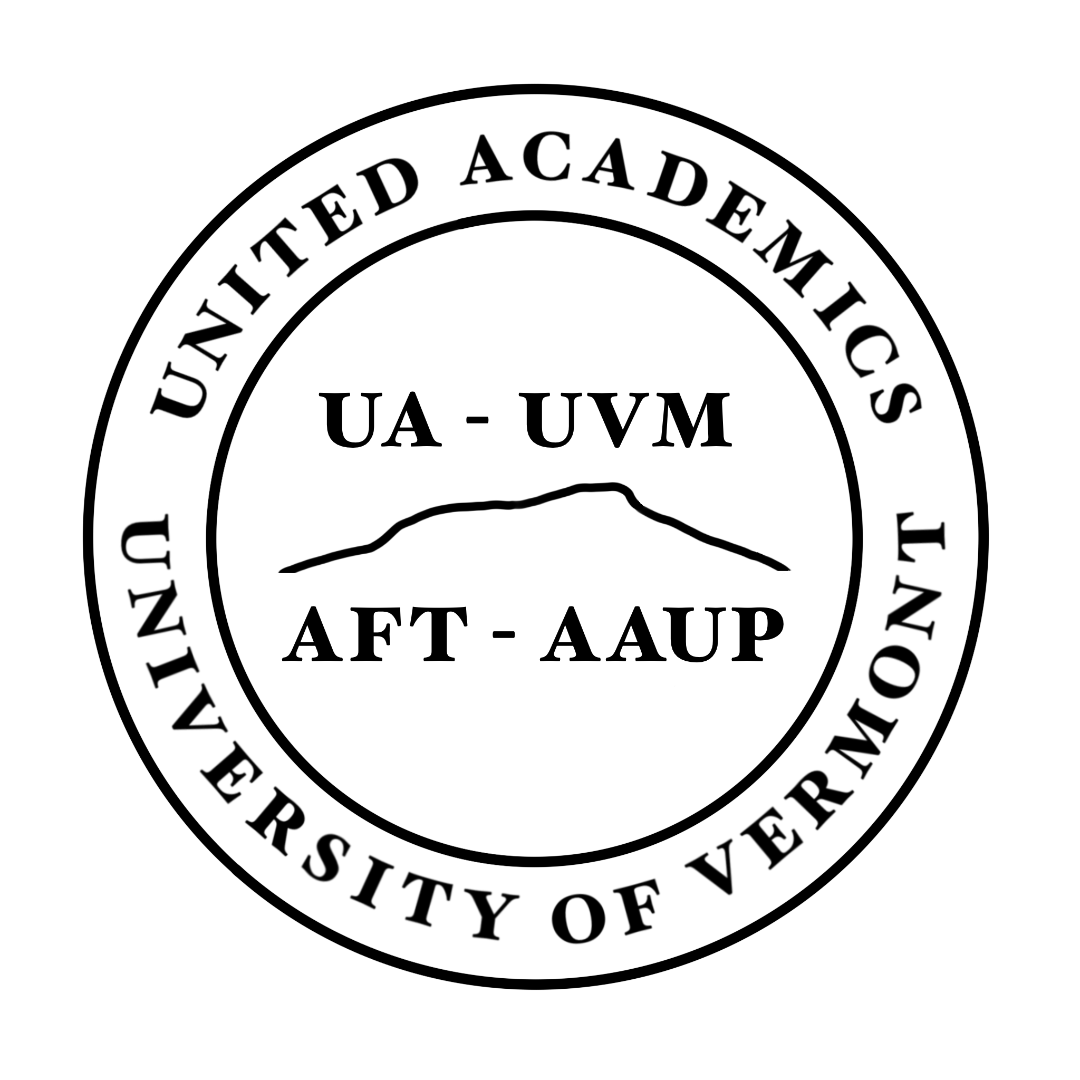A message from your union, which brought you expanded and guaranteed professional development funds
Dear colleagues,
I received a few helpful suggestions about the email I sent out a week ago regarding the expected Janus case decision and the value of being a member, so today’s message is a follow up.
First, there was an embarrassing typo in my last message: fee payer status under existing law costs 0.8321% of a faculty’s salary, not .082%. My apologies. (Current membership fees are of 1% of salary.) Thanks to those who pointed this out.
Second, I was asked if I could summarize where those membership fees go. The budget for this coming year was emailed to all UA members in the lead up to our spring membership meeting, but it is complex. So I will provide here a very brief, broad summary of UA’s expenses with some explanation. (Thanks to UA Treasurer and faculty member in Math & Statistics, Joe Kudrle, for his help with this.)
I’ll preface this overview by saying that, for a number of reasons, UA leadership is currently looking carefully at its structure and organization. So if you have questions or concerns about where the money goes, now is a good time to talk to colleagues and consider getting involved in the discussion about how best to organize UA in the future.
That said, the budget passed at our 2018 spring member’s meeting projected total expenses for FY 2019 to be $425K (down a bit from previous years because of the expected losses due to Janus).
Honoraria: By choice, we have been a heavily faculty-run union, and thus have historically paid more than many unions in stipends (for course releases or equivalents) to facilitate the large amount of work UVM faculty have done on behalf of UA. This budget’s 13% is substantially down from previous budgets, as we have cut the majority of our stipends in half, but the work done by individual faculty is still very substantial. For example, our Contract Administration Committee does an enormous amount of work, almost all of it confidential, helping individual faculty throughout the year. This could not be done without some teaching relief for its most active members.
Staff: For the same reason, our staff costs (13%) are lower than many, perhaps most, higher ed unions. Our staff budget goes largely to our part time 10-hour-per-week administrator, Patti Gannon, and to our consultant, Steve Finner, who has been working for us part time (officially, five days a month) providing expert legal and policy help since he retired from a lifetime career with AAUP.
Other: The “other” category of expenses (18%) is made up largely of negotiation- and contract-related expenses. For example, we occasionally pay for legal advice about specific grievance and contract details, and we needed a lawyer with expertise in Vermont labor law to represent us in the fact finding hearing and related issues in our recently concluded full time contract negotiations.
Dues and Fees: More than half our expenses go to payments to our two affiliate organizations, AFT and AAUP, according to fixed formulae based on our own income from dues and fees. This is typical for higher ed unions. What do we get for all that?
In general, unions have found it efficient to pool resources, so each union is not faced with reinventing the wheel on its own when dealing with legal and policy complexities. Some of that money comes back to us for efforts directly on behalf of UA. For example, Katlyn Morris (UVM PhD 2013, Lecturer since 2012) is serving us in several ways, including as Chief Negotiator for our part time unit’s ongoing negotiations, and her salary is paid for by VT-AFT. We also regularly consult with experts in higher education issues at both organizations on matters ranging from intellectual property policies and the legal and policy complexities of implementing things like the Janus decision. And both organizations keep an eye on political and legal issues in a way that UA could not do on its own: AAUP is particularly engaged with matters of intellectual freedom and trends in higher education policy nationally, and AFT is engaged with legislative issues both nationally, and via AFT-VT, in Vermont. They represent UA’s interests in arenas we are not well equipped to.
Besides direct benefits, there is a “pay-it-forward” logic to union umbrella organizations. Unions help each other, and a stronger union context nationwide helps everyone. When faculty at UVM first organized UA, we received enormous amounts of support dealing with the logistics and legal issues surrounding the creation of our union, and that help was paid for by union membership fees paid for by other unions. So it makes sense that some of our contributions now go to help organize other unions.
Again, all of these matters can be subject to change over the long term. Some (e.g., stipends) are fairly flexible, whereas our relationships to affiliate organizations are determined by a three way contract that would be quite complex and difficult to change. But we are currently exploring alternative organizational structures for the future, and nothing is completely off the table.
As always, I welcome comments and questions.
Tom Streeter
President, United Academics
http://www.unitedacademics.org/join-us/
United Academics is the union of full- and part-time faculty at University of Vermont, representing over 700 faculty from departments and colleges across the campus. We represent faculty in negotiating and upholding contracts, and we advocate for fair labor practices within and beyond our academic community. We are a member-led union committed to academic freedom, shared governance, social and environmental justice.
Get to know us at www.unitedacademics.org, and United Academics on Facebook

